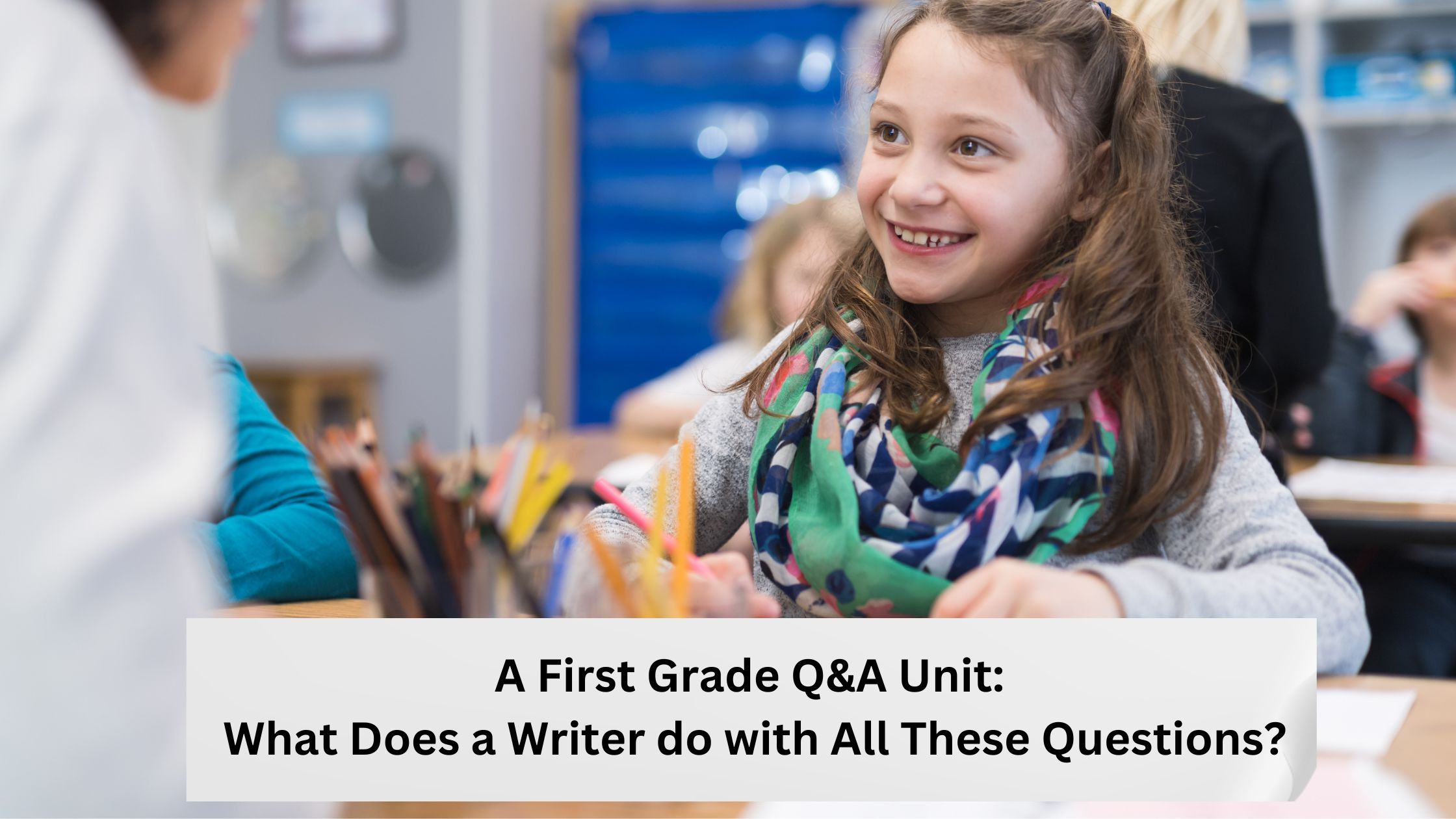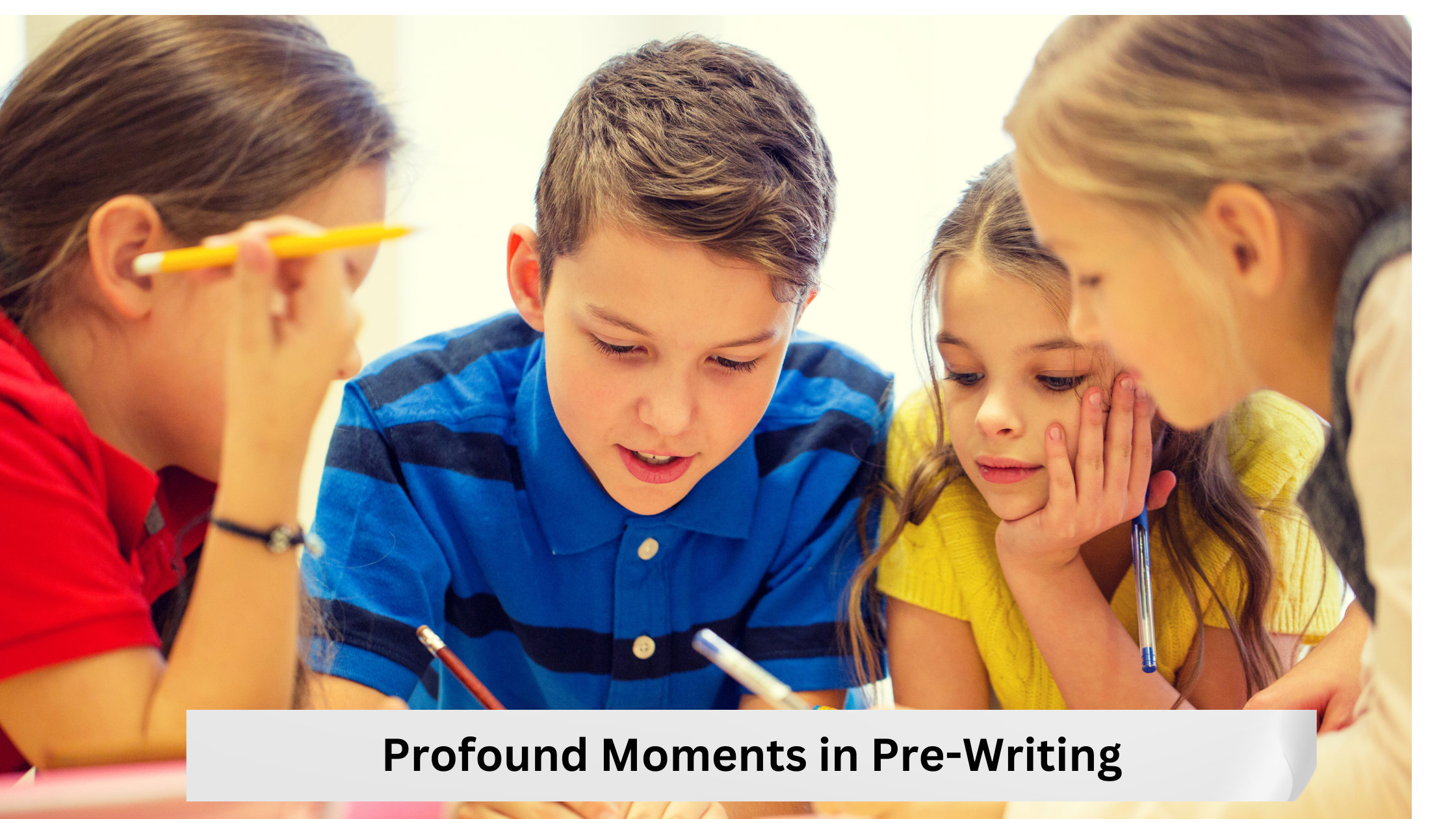Although I have taught for 24 years, this is my first year in many years to teach 1st grade. So far, we have completed four writing units that I was familiar with, but Unit 5 is new for me, which inspired me to blog about it. Let’s explore informational writing in a Question and Answer format and how to use strategies throughout the 1st grade day to support this writing.
Stephanie Harvey tells us:
“The real world is rich, fascinating, and compelling. Primary kids know this. They burst through the door brimming with questions about the real world. . . . Nonfiction texts, more than any genre, lets us explore the real world, ask questions, and find out compelling information.”
In the classroom, our role as educators is to harness the inherent curiosity and inquiry approaches that students possess, while also offering support for the research activities included in the curriculum. By emphasizing the questioning techniques that students naturally employ, this unit encourages them to delve into their curiosity and find ways to share their knowledge and newfound insights with others.
To establish a solid Question and Answer Writing Unit in 1st grade, we will:
- Focus on the Research process using graphic organizers and a clear understanding of questions and answers.
- Focus on building a foundation of basic question structures connecting to our previous learning of how good readers ask and answer questions as they read.
- Utilize visual aids and supports for students to remember what question words are and how they are used.
- Gradually progress from simple “who/what/where” questions to more complex “why/how” inquiries, while emphasizing clear, concise written responses with proper sentence structure.
Let’s explore each of these:
Foundational Concepts
- Question Words
- Introduce and practice fundamental question words such as “who,” “what,” “where,” “when,” and “why” through repetitive activities and picture prompts.
- Sentence Structure
- Reinforce the idea of a complete sentence that includes a subject and a verb, using straightforward examples like “The dog is furry.” In this unit, at this time of year in 1st grade, we have had lots of experience developing strong sentences and we will focus in on expanding our sentences to include descriptive words, like “The big, black dog is furry, has 4 legs and a tail.”
- Answering Techniques
- Model how to identify key details in a text or image to create a clear and concise answer. We will do this work as we research to discover more about our topic. We will use a graphic organizer to help us with this.
Engaging Activities
- Read Alouds
- Regularly read stories aloud and pause to ask simple comprehension questions, allowing students to respond verbally before transitioning to written answers. I enjoy using books like Steve Jenkins’s What Do You Do With a Tail Like This? or Stan Tekiela’s books, including Whose Track is That?, Whose House Is That? and the amusing Whose Butt?
- Picture Prompts
- Use images to generate questions and answers, focusing on identifying details and describing the scene.
- “Question of the Day”
- Begin each day with a straightforward question related to a familiar topic, encouraging students to think critically and write their answers.
- “Who Am I?” Games
- Engage students in guessing games where they ask “yes/no” questions to discover a mystery person or object based on clues.
Scaffolding and Progression
- Graphic Organizers
- Utilize simple graphic organizers like “Who, What, Where” charts to help students structure their thoughts and write complete answers, supporting their research on the topic.
- “Think Aloud” Strategy
- Demonstrate the thought process of answering questions by verbalizing your reasoning while reading, allowing students to make the connection between questions and answers.
Celebration, Assessment and Differentiation
- Celebration
- One of the most important things I think of as we begin each unit, is how we will celebrate our writing. I do this, so that students can set a purpose for their writing and determining who their audience will be. In this unit, students will be sharing with families, the evening of their music program, which is animal focused and students may choose to do an animal focus for this unit along with many other topics of choice.
- Observe and Monitor
- Regularly assess students’ grasp of question types and their ability to formulate written answers through observation and quick checks. I will do 3 check-ins during this unit. The first will be focused on the research aspect this unit, the second check-in will be focused in on the question and answer format of the unit and the third check-in will be focused on conventions and sentence structure. As I do these, check-ins I will be looking for ways to pull strategy groups with like needs or missing skills.
- Differentiated Instruction
- Offer extra support for struggling students with visual cues, sentence starters, or simplified questions, while challenging advanced learners with more open-ended queries. I will always have on hand published, teacher and student mentor text to support my conferring with struggling students.
Remember to make the learning experience enjoyable and engaging by incorporating gentle nudges for next-step thinking, positive reinforcement, and real-life examples in mentor texts to connect with students’ experiences. I feel like this is going to be a very engaging unit for our students and will continue our momentum of learning to write for a purpose.


